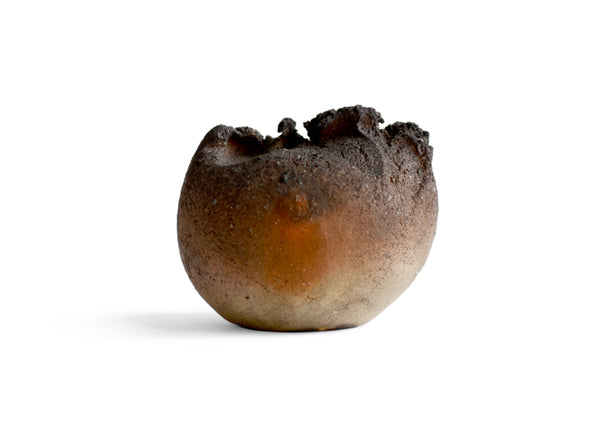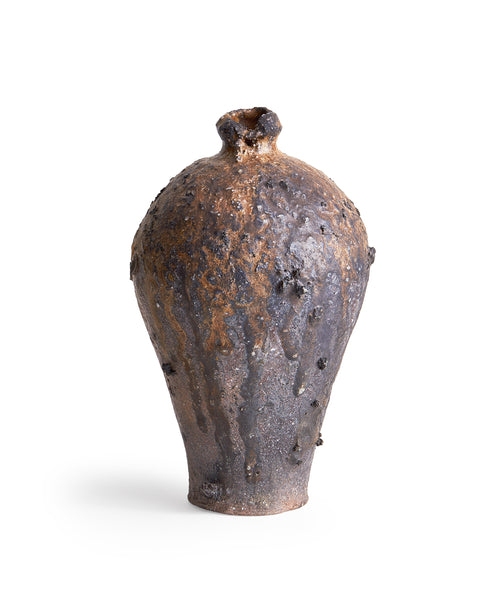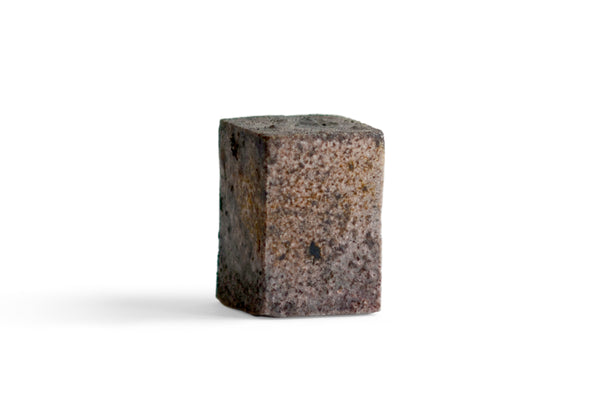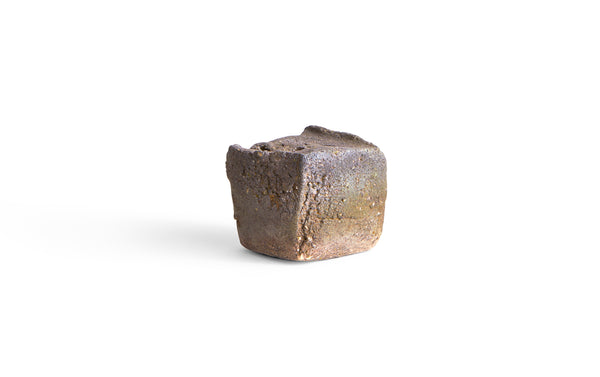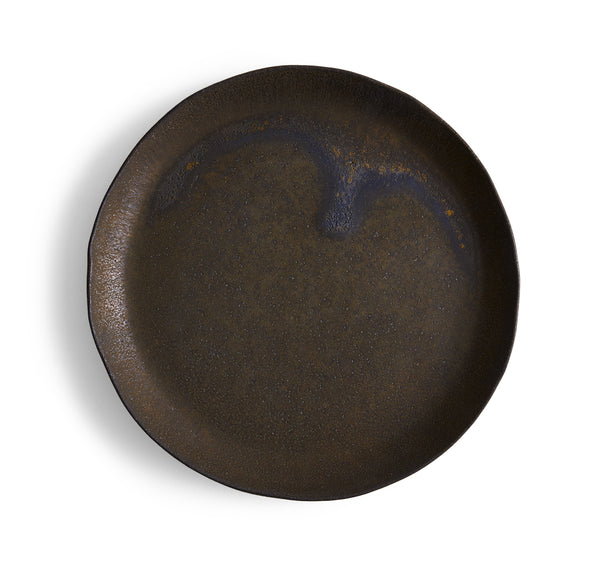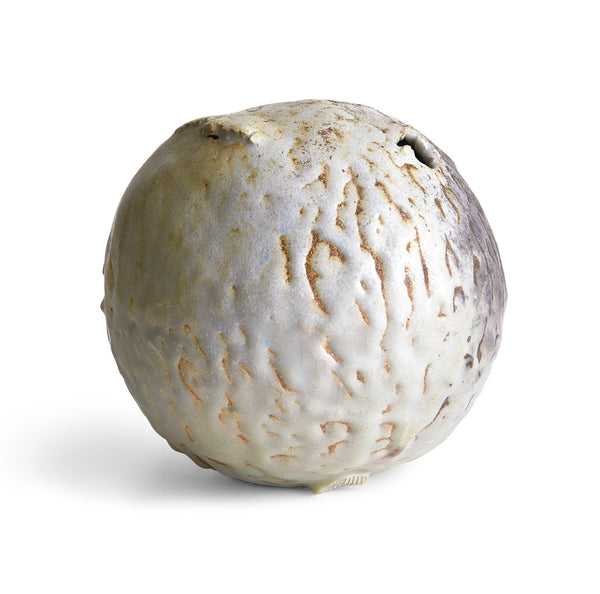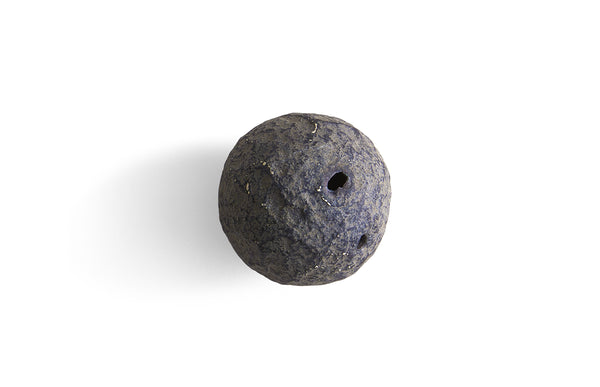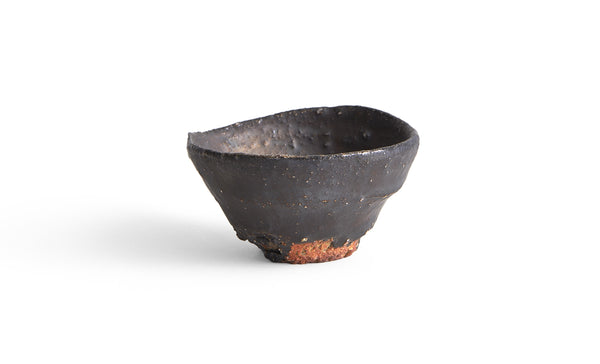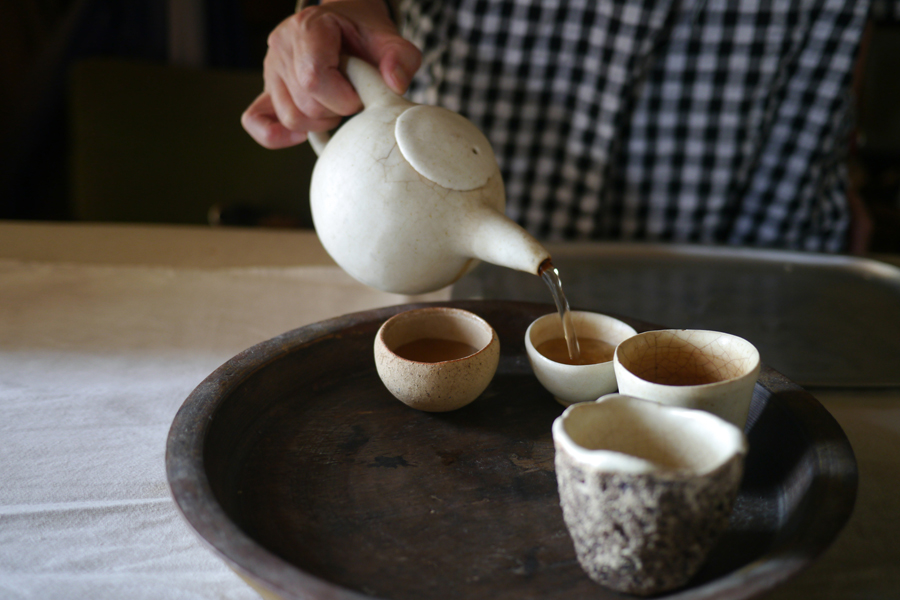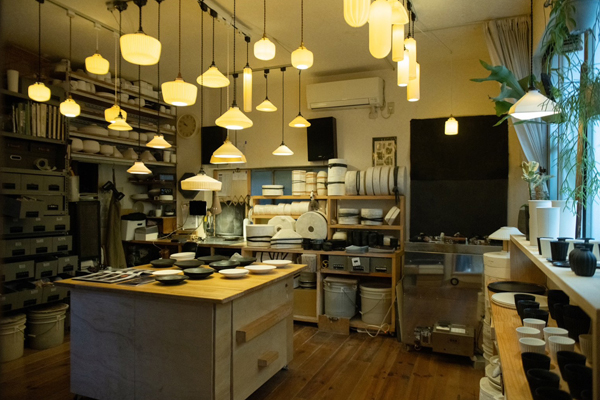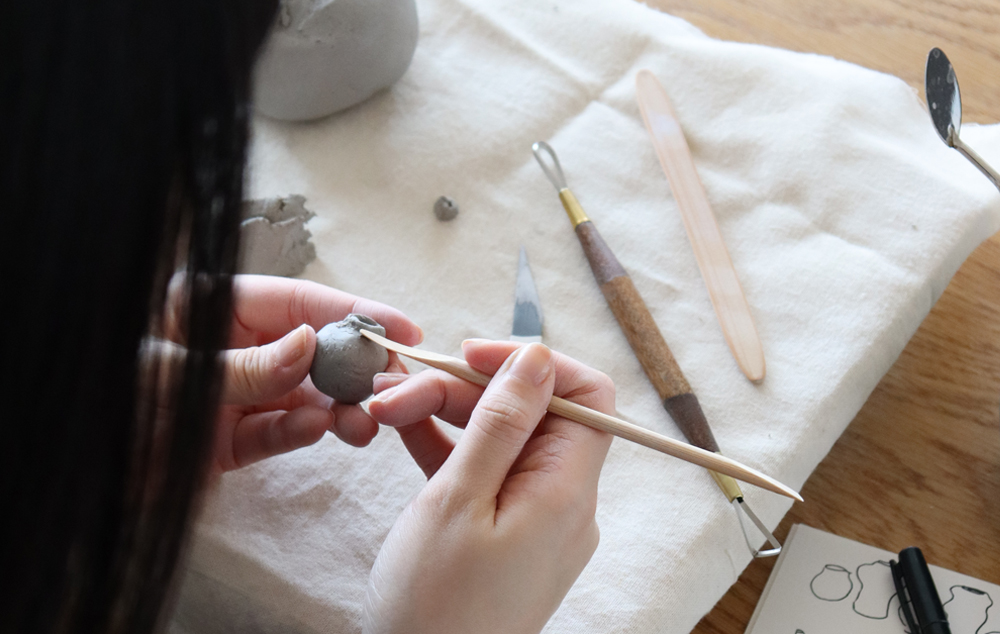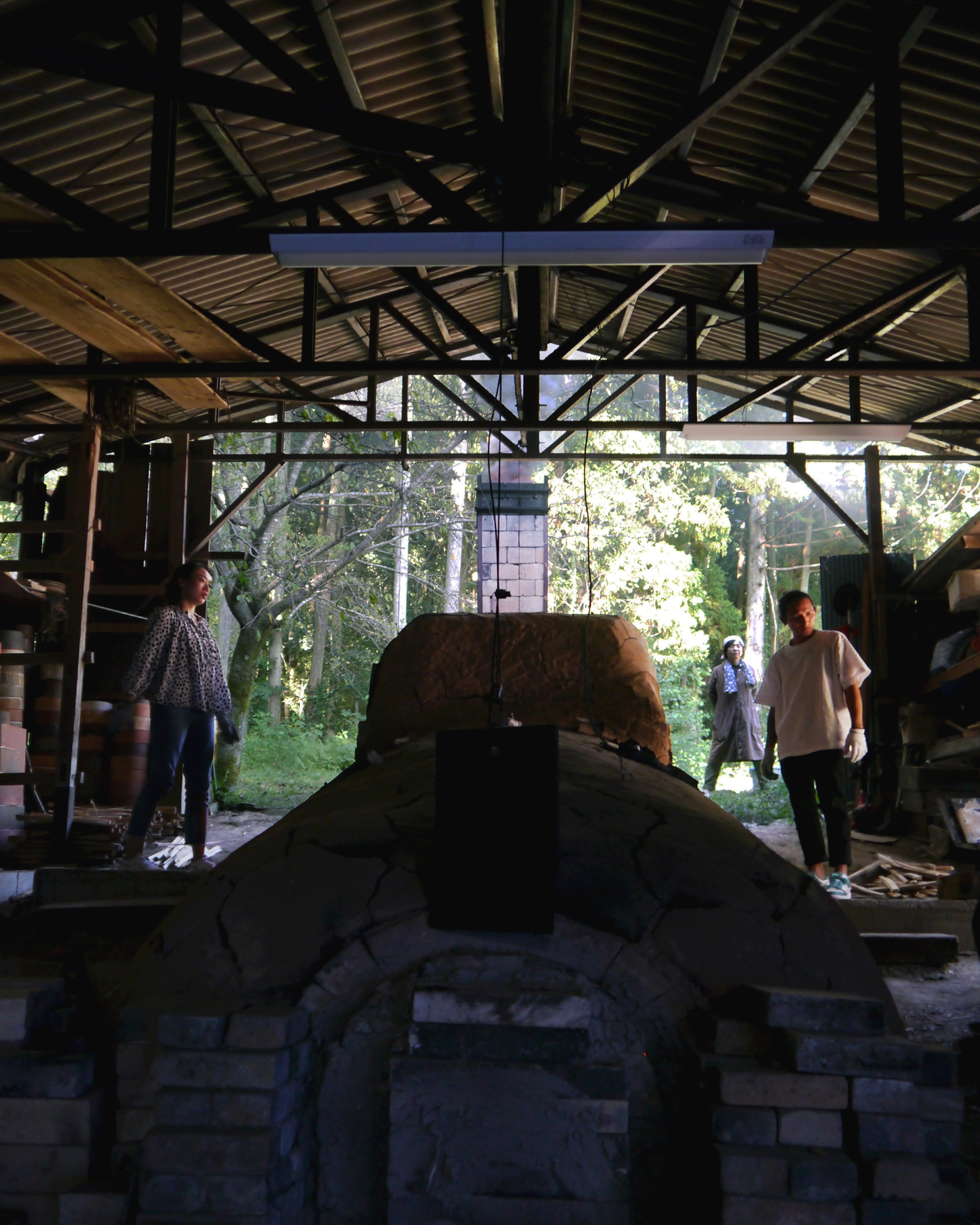
When I first heard the term “Anagama,” I actually didn’t know what it was. It’s a wood-fired kiln used to fire pottery—that’s all I knew. I had also heard that the interaction between flames and ash creates unique expressions on the ceramic surfaces. But what does the kiln look like? Is it different from a climbing kiln? How does the fired pottery turn out? With a head full of questions, I headed to Fukuoka in mid-October, just as autumn was deepening, to see the Anagama kiln fired by potter Keisuke Iwata.


Keisuke Iwata, based in Fukuoka, is known for his cups and bowls that fit comfortably in the palm, as well as his charming katakuchi and teapots. Plates with markings resembling shells and delightful round flower vases he calls “stones” are also among his signature works. Additionally, firing pottery in Anagama is a practice Iwata-san has explored for the past decade, about once each year.

After getting off the Shinkansen at Hakata Station, I headed north to the countryside by local train. At 4 PM, I met up with Iwata-san, who was on his way to the Anagama kiln. On the way, he took me to an udon restaurant for an early dinner. I ordered the same dish as him: udon noodles in clear dashi broth, topped with burdock tempura. I was delighted to be introduced to this local favorite by Iwata-san, whom I had only met a few times.
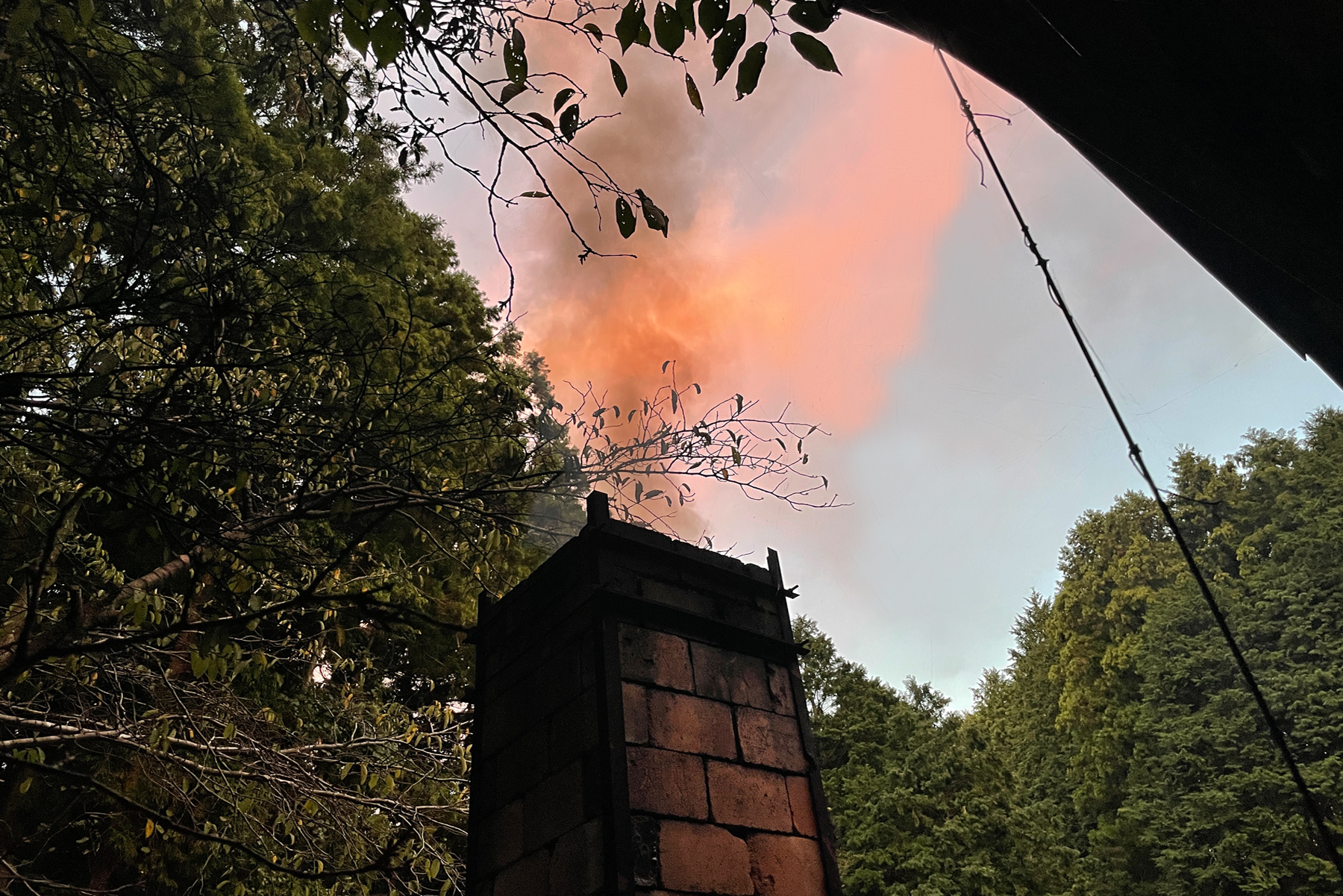
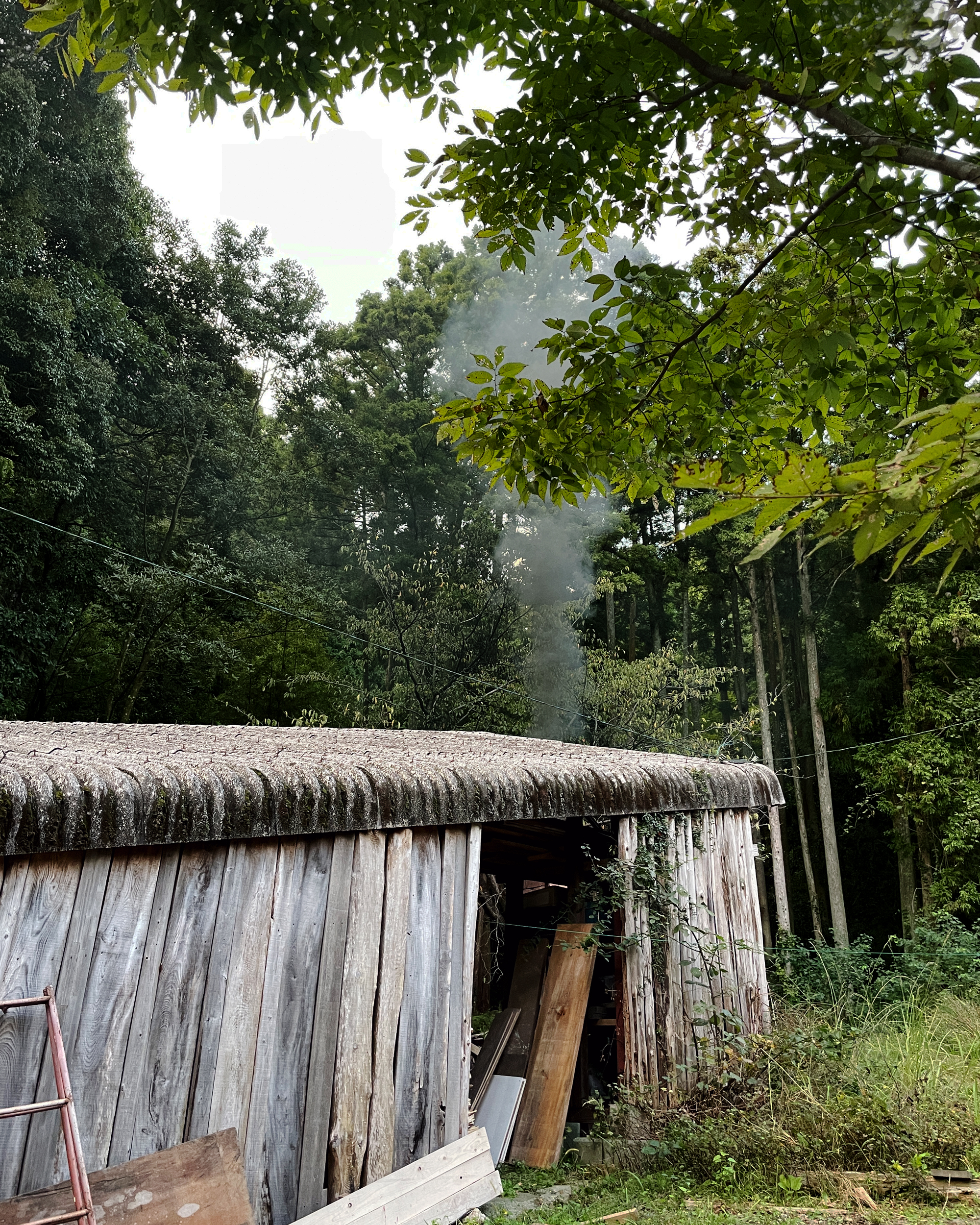
About a ten-minute drive from the udon restaurant, a corner resembling a lush forest appeared in the middle of an open countryside. This was the home and studio of potter Toshihisa Ishihara and his wife, Tamiko, who is also a potter. The Anagama kiln on the premises is owned by Ishihara-san, and the kiln shed, which resembles a barn standing on a gentle slope, is a simple structure with a wooden wall and a roof. From behind it, gray smoke was spewing into the sky. Surrounded by the deep green of the trees, it felt like Scandinavia or another foreign land.

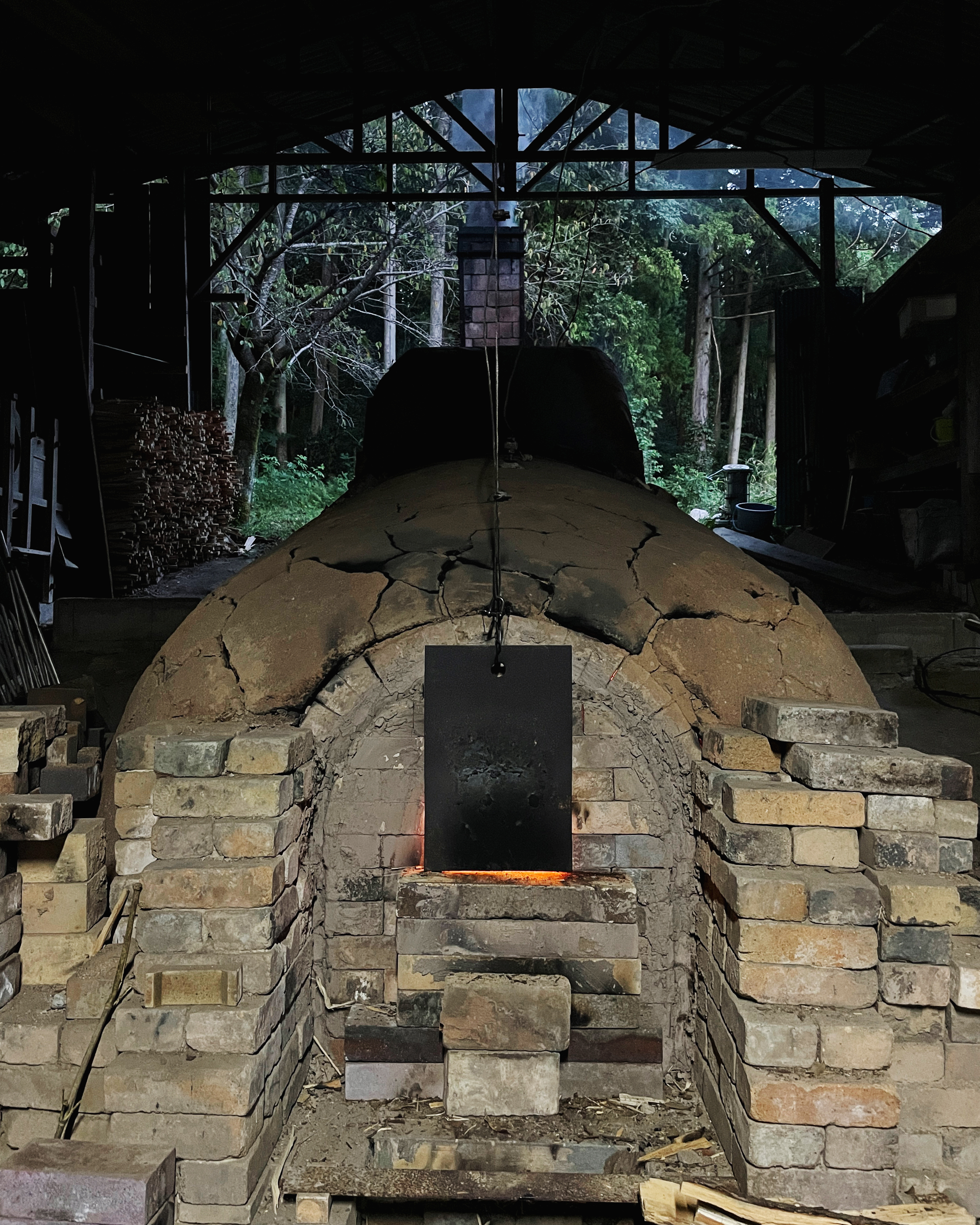
Stepping into the kiln shed, I saw piles of firewood for fuel, and then the dome-shaped Anagama kiln made of white-brown fireproof bricks and clay emerged, radiating heat from inside. The top of the kiln was semicircular, and the body was long and tapered toward the end. The clay was cracked here and there… I had a feeling of déjà vu. Ah! It reminded me of a whole grilled fish encased in salt crust.
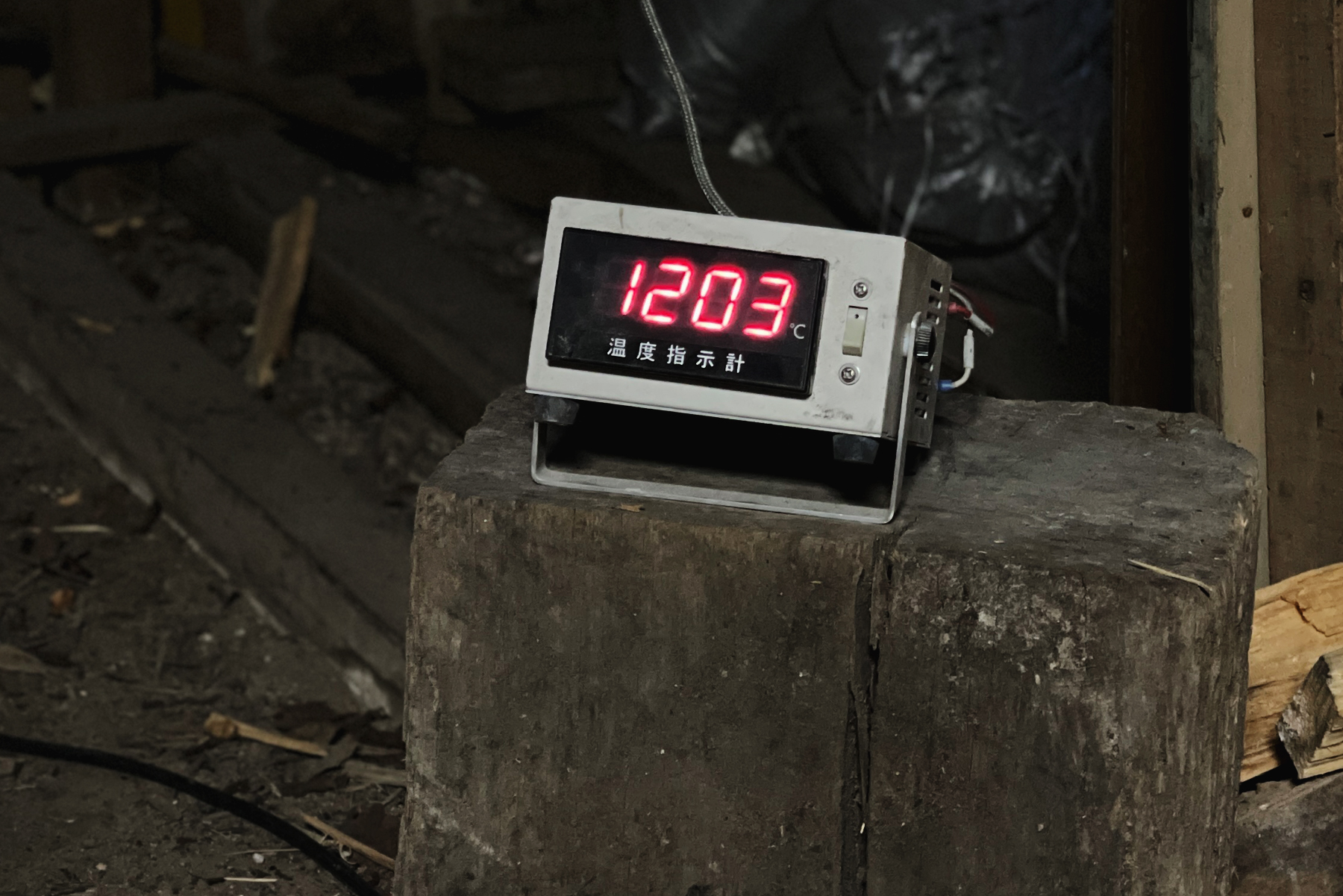


The Ishihara couple, Iwata-san, and another potter took turns stoking the firewood all night, firing the kiln over a total of four days. There was only one day left, and tonight, Iwata-san was on duty until dawn.
“Anagama is old. It is a precursor to the climbing kiln,” Ishihara-san explained. “There’s a small room called ‘sutema’ in the middle, which acts as a temperature control valve to prevent the flame from going directly into the chimney. The sutema gradually grew larger and became established as a room, and then Anagama transitioned into a climbing kiln.”
Ishihara-san, who has trained under potters and has ample experience firing kilns, is in charge of the site. His straightforward explanations were appreciated, and my questions were easily answered.
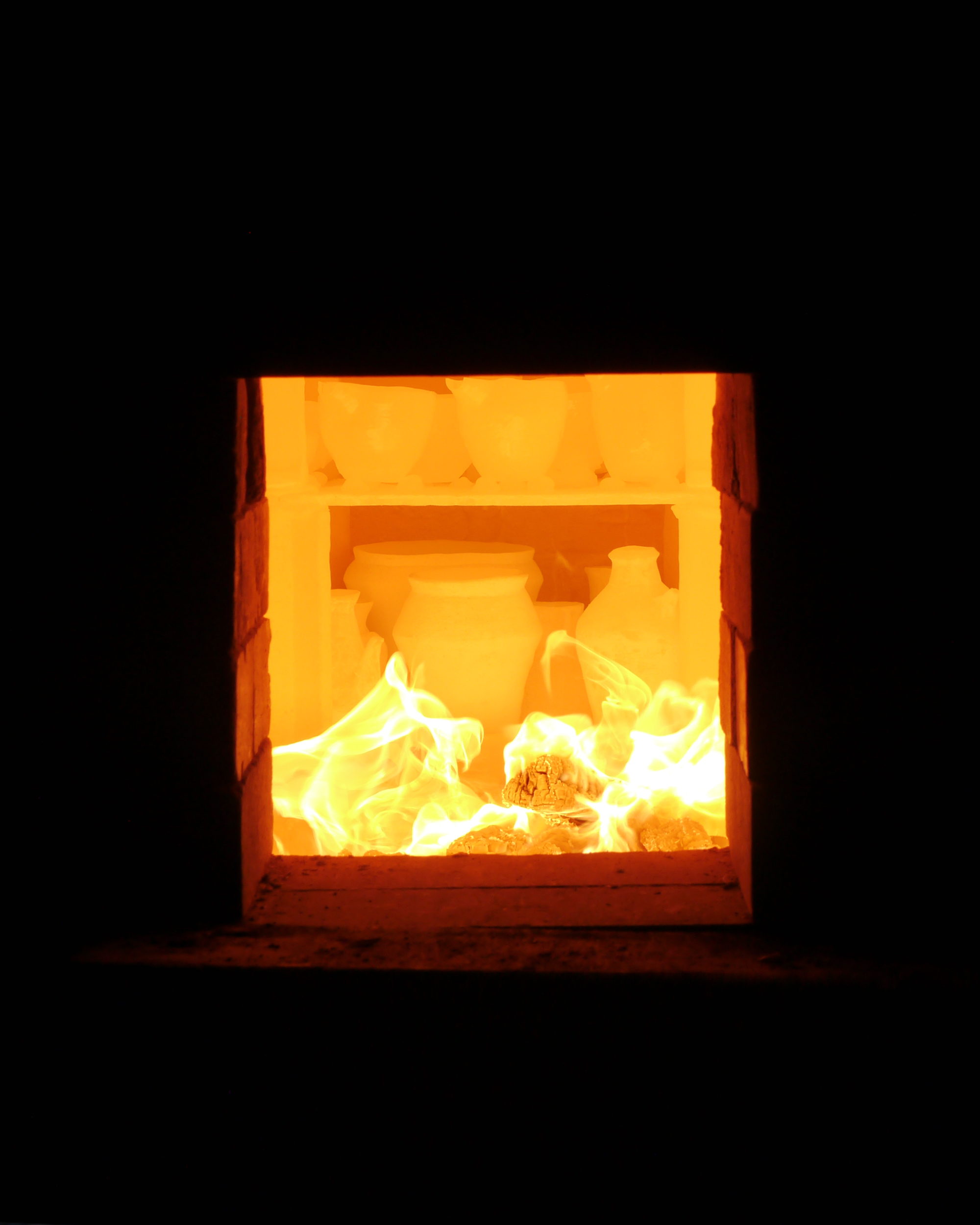

Ishihara-san’s Anagama has a square opening called “takiguchi” at the front for inserting firewood, and just behind it is a fire bed where the firewood burns. Further back, there’s a firing chamber with three steps, connected to the chimney via the sutema to regulate the temperature. Ishihara-san shared that it was the wisdom of our ancestors to arrange the firing chamber according to the shape of the flame, allowing the flame to reach as far back as possible. A climbing kiln has multiple firing chambers connected together, divided like rooms. Compared to primitive Anagama, the climbing kiln is larger in scale and can fire more items.
In the firing chamber this time, there were dozens of pieces by the Ishihara couple and about 60-70 pieces by Iwata-san placed near the hearth.
According to Ishihara-san, there are various types of Anagama and climbing kilns, and the construction and firing methods vary depending on the finish desired by the potters. One Bizen ware potter built a massive kiln over 50 meters long on a mountain slope and fired it for about four months. “Bizen is not a type of pottery that originally requires a showy appearance, so the kiln is built on a gentle slope, and the flames are soft and light.” Conversely, Shigaraki ware is fired in a kiln with a steep slope where the flames rise with great force. The intensity influences the pottery’s appearance, making it much more extravagant. Anagama firing, with its ancient roots and unique approach, holds a significant place in the pottery world, representing a dialogue between tradition and innovation. Ishihara-san’s Anagama sits in between the two.
Several factors affect the finish, one being the embers, which are the remains of firewood before it turns to ash. As the kiln fires, the embers that accumulate on the hearth at the front strike the pieces, causing changes in color and pattern known as kiln discoloration. The final result will vary depending on the type of discoloration achieved. Bizen ware, for instance, is fired without painting or glazing, retaining the natural look of the clay, while Shigaraki ware is characterized by its reddish-brown color, black scorch marks, and natural glaze, encompassing a wide range of works from vessels to bowls.

If that’s the case, how do Ishihara-san and Iwata-san’s Anagama kiln fire, and what kind of finish do they aim for?
“On the first day, we raise the temperature by 30 degrees per hour. That’s a bit steep. We set a time limit for the three nights and four days because we have a limited amount of firewood.”
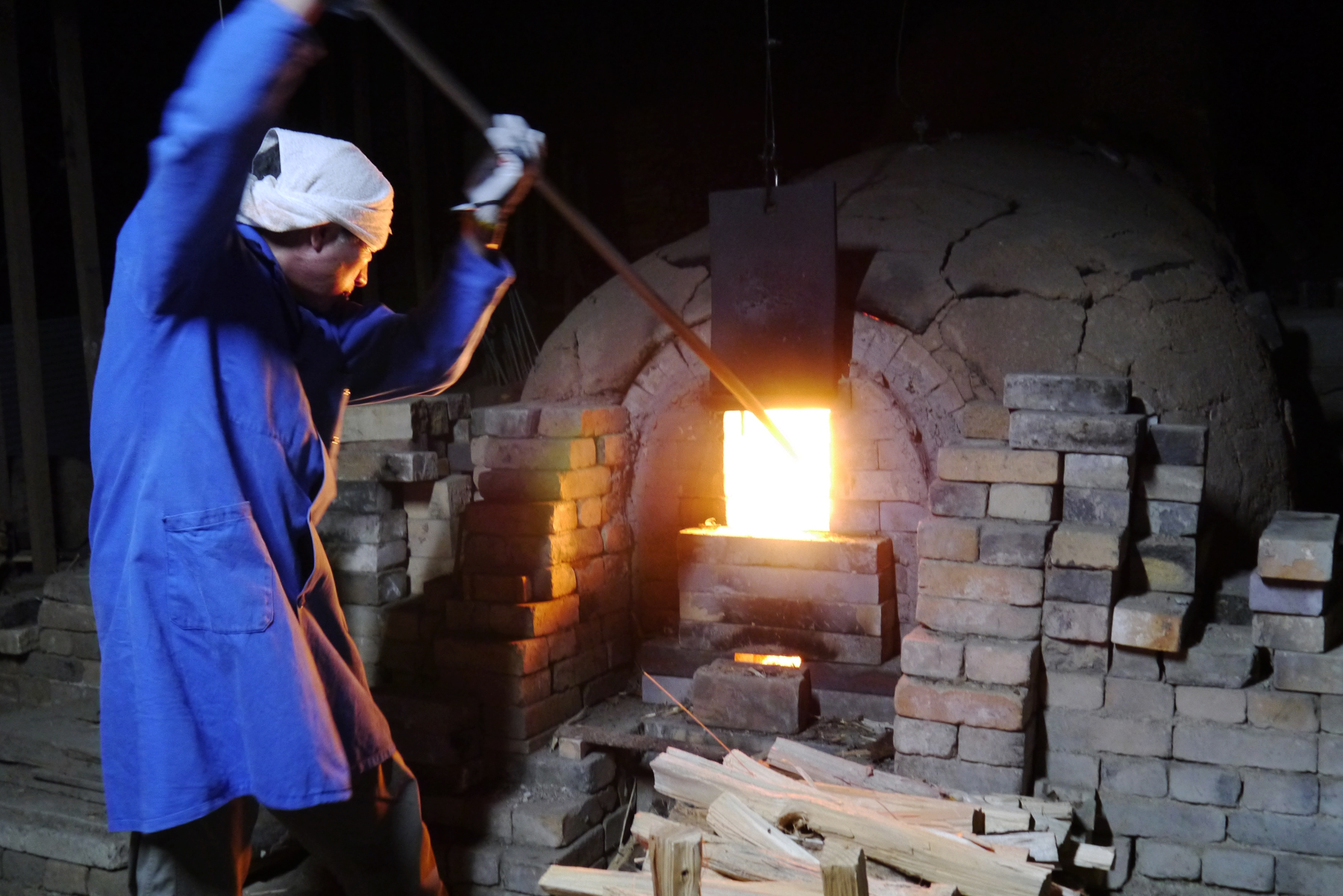
The final goal is 1260-1270 degrees, aimed for around noon on the fourth day. Once it exceeds 1150 degrees on the third day, the temperature is kept in the 1200-degree range for 8-9 hours. “When the temperature of the kiln exceeds 1200 degrees, the ash in the kiln begins to melt,” says Ishihara-san. When the molten ash hits the work, it turns into droplets and flows to the surface of the pottery. This is known as vidro (natural glaze). “Some potters like the vidro to flow, but we aren’t big fans of it. We think it’s more unique when all sorts of things from the kiln stick to the surface of the pottery, creating a chaotic look,” he adds. For this reason, the molten ash accumulates on the pottery’s surface, and just before it flows—when the pottery is still sticky—they pour the embers from the hearth onto the work or bury it in embers. The embers become adhesions, creating a complex appearance for the pottery. Iwata-san describes it as “like ash stuck to it, as if it hasn’t been burned completely. It feels like giba-giba, gabi-gabi.” Hmm? Giba-giba, gabi-gabi? I was confused by the unfamiliar onomatopoeia, so Ishihara-san followed up, “It has a presence like an excavated artifact found at the bottom of the sea or underground.” Oh, I see!
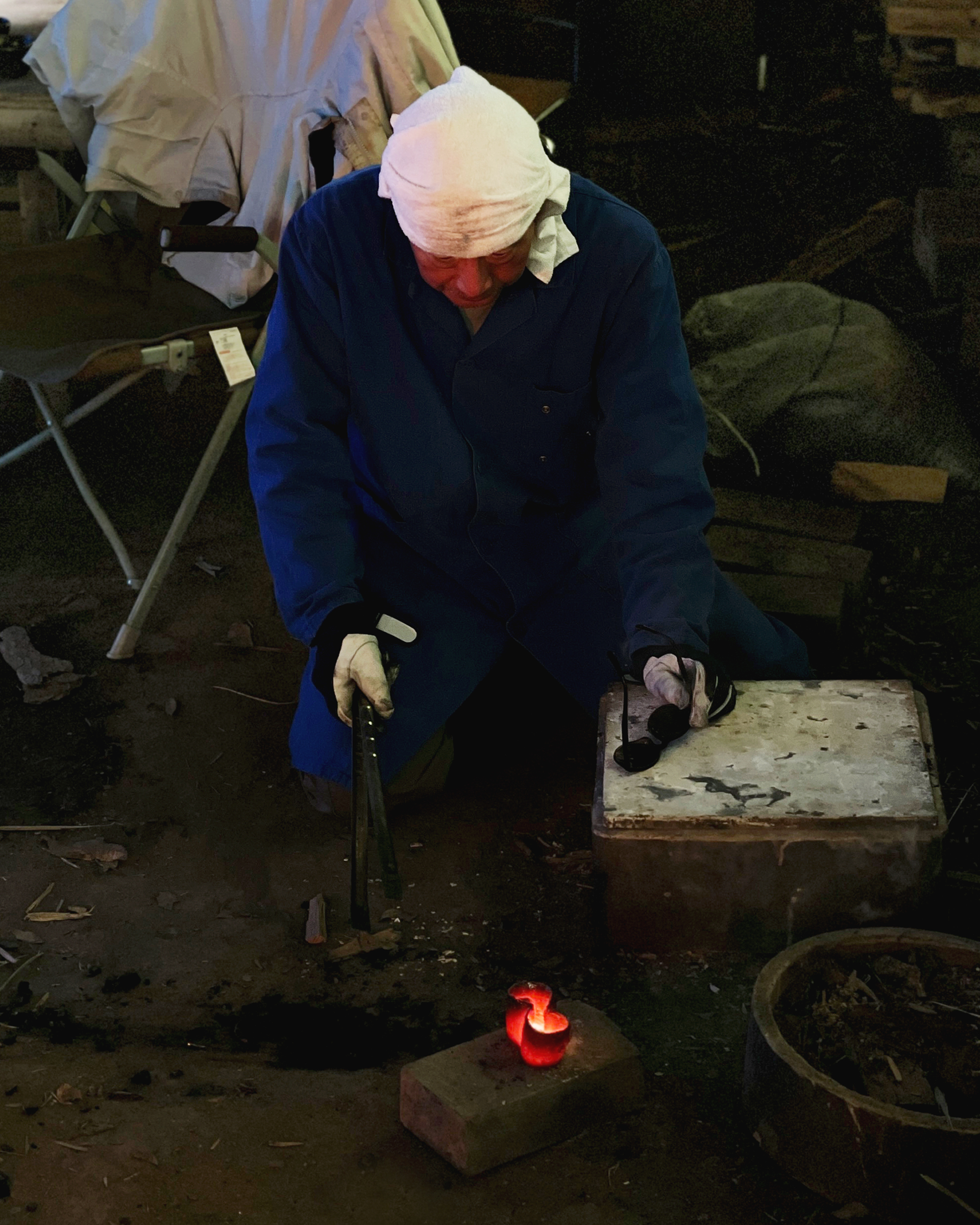
At 8 PM, three hours after my arrival at the Anagama kiln, the task of “pulling out” began.
Normally, the pieces inside are removed a few days after the kiln is turned off. But instead, they take out several pieces that are still hot from the kiln. This is called “pulling out.” Why do they do this? Is it like “tasting” food? Ishihara-san laughs at my question. “It’s not about checking the pieces; it’s just about the excitement.” Seeing the pieces before you open the kiln brings us a privileged thrill. It’s a lot of fun.
The two of them eagerly begin preparing for the pulling out.


Ishihara-san opened the takiguchi, inserted a long-handled shovel and a key-shaped stick, and pulled out one of Iwata-san’s pieces closest to the hearth. The flame in the kiln roared loudly, and the firewood crackled. Just in front of me, as I took pictures of Ishihara-san, a red-hot fireball on the shovel passed quickly, landing with a whoosh on the rice husks where Iwata-san was waiting. Smoke rose up, and the air filled with the delicious aroma reminiscent of bacon and ham being smoked.
Ishihara-san explains that quickly cooling pottery and smoking it is one way of creating a unique aesthetic. “When you cool it quickly, it sparkles. An interesting shine appears.”




The sake cup that was pulled out was pitch black with soot. Iwata-san dipped it in water and scrubbed it with a brush. “It’s a bit lustrous,” Iwata-san remarked. “Yeah, it has a shine, but more like it has glitter. I think it’s the effect of the smoking process,” Ishihara-san noted, peering into the work. The sake cup, which should have been white with a rough texture, was unexpectedly olive green and covered with a metallic film. “I’ve never seen such a color before…” Iwata-san muttered. Flame, heat, embers, ash. Cooling, smoking. Even if you take measures according to plan, it doesn’t always go as expected, and the result comes from an unexpected direction. Predictions and miracles intersect in the works from the Anagama kiln. That’s why I asked Iwata-san if he was fascinated by the Anagama kiln, and he replied, “Yes. It’s very, super interesting.”
After leaving Iwata-san on site, I returned to the hotel. The next morning, at 8 AM, I headed back to the Anagama kiln.
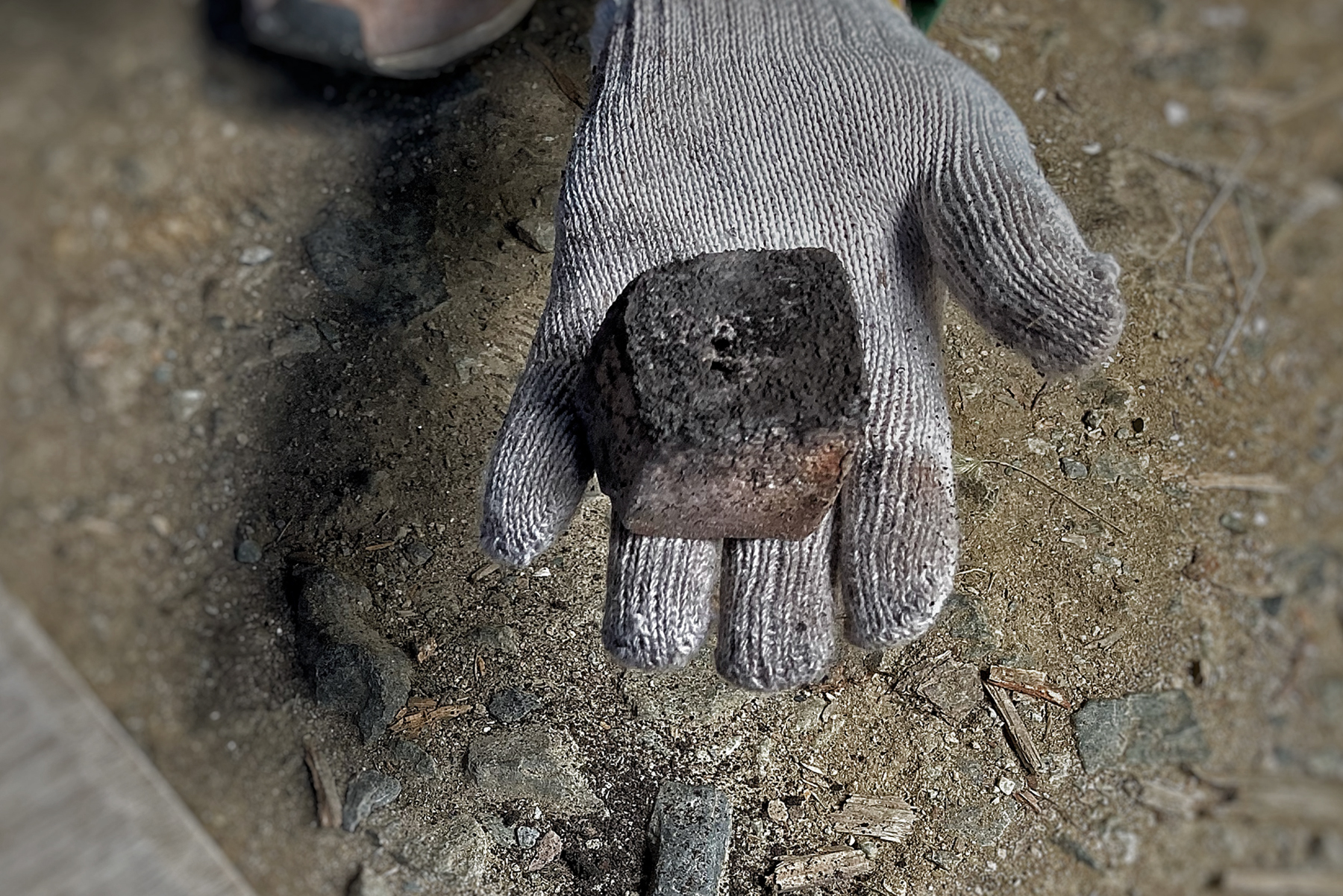


On the fourth and final day, they performed a few more “pulling out” sessions, while their friends, including a firefighter and a sushi chef who helped with the firing, began to gather. On the final day, it’s customary for both experts and amateurs to take turns adding firewood from multiple openings and firing the kiln. Everyone brought food and chatted while stoking the fire. It was so peaceful. To be honest, before coming here, I had imagined a tense and high-pressure kiln site… “That’s true at other places,” Ishihara-san laughed. “But ours doesn’t have to be this way. It’s a kiln where the end result is always good.” Amateurs like me are welcome to participate, and taking photos inside the kiln is permitted (thank goodness), even though it would typically be frowned upon, with potters warning, “It’ll cool down! The pottery will crack!” And free beers, too. “Whether we’re strict or having fun, the end result is the same. So why not have fun?” A freestyle Anagama kiln experience over three nights and four days, the vibe of ease and flexibility is also part of the “flavor” of the works created here.
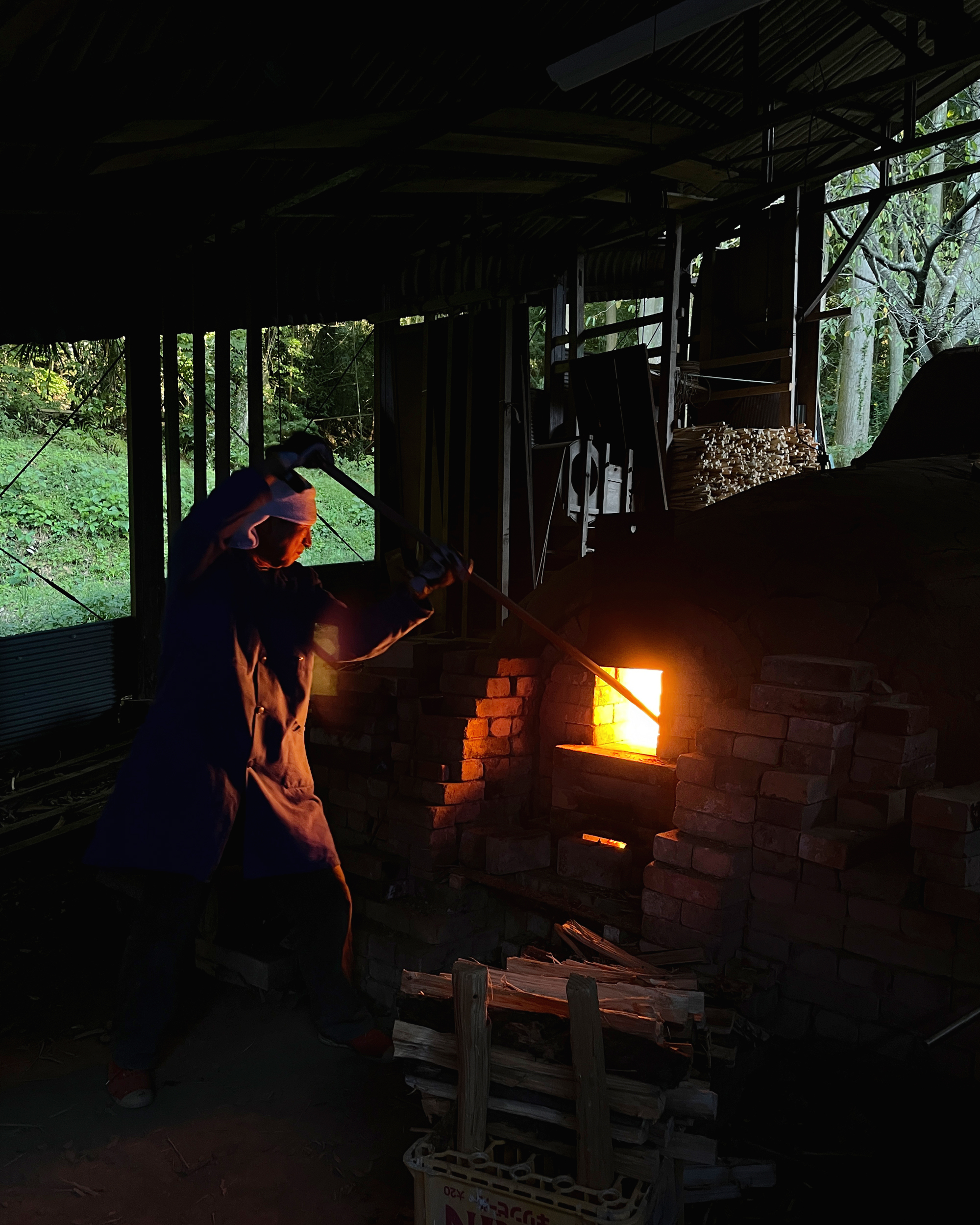

Around noon, ten people kept taking turns adding firewood (I participated a few times!), and it was time to extinguish the fire in a few hours. During the conversation between Ishihara-san and Iwata-san, the topic of “intention” arose.
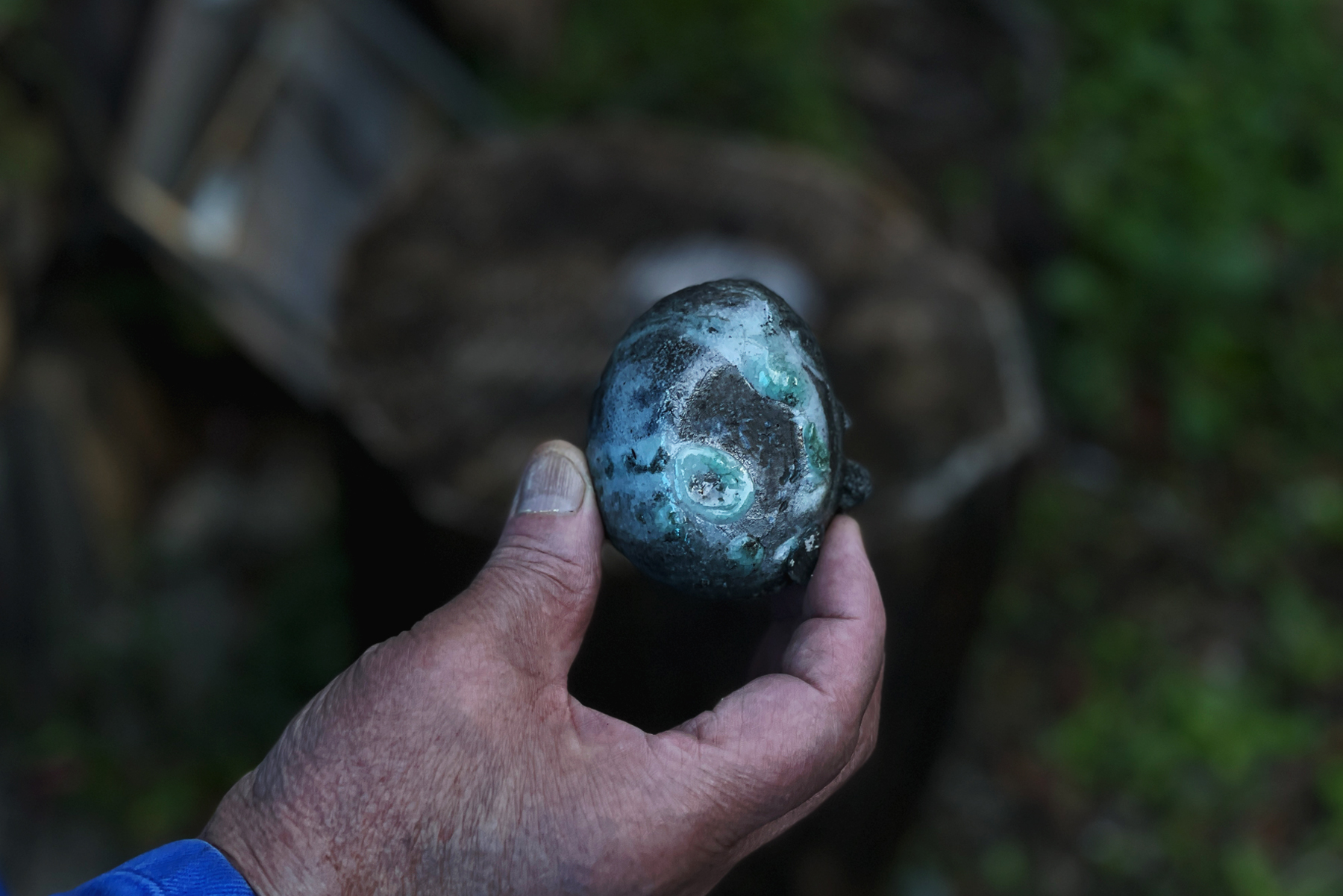
Iwata-san explained that he seeks textures in his Anagama kiln works that resemble those of excavated items, with a crackly (giba-giba) and rough (gabi-gabi) feel. “I’m drawn to things that have naturally aged, as if they’ve been at the bottom of the sea. Like shells stuck to them.” Ishihara-san described it as “a loss of intention.” Just as pottery that sinks to the ocean floor loses the intent behind its creation over time. Just as a Buddha statue is consumed by insects and decays along with the artist’s intention. When the artist’s intention fades, a different presence emerges. Iwata-san believes this transformation is possible with the flames of the Anagama kiln. “There’s an old saying about pottery: ‘First, fire, second, clay, third, craft.’ Nowadays, we often see pottery where the intricate details that should come last take precedence, but in the Anagama kiln, the correct order ‘still remains.’”
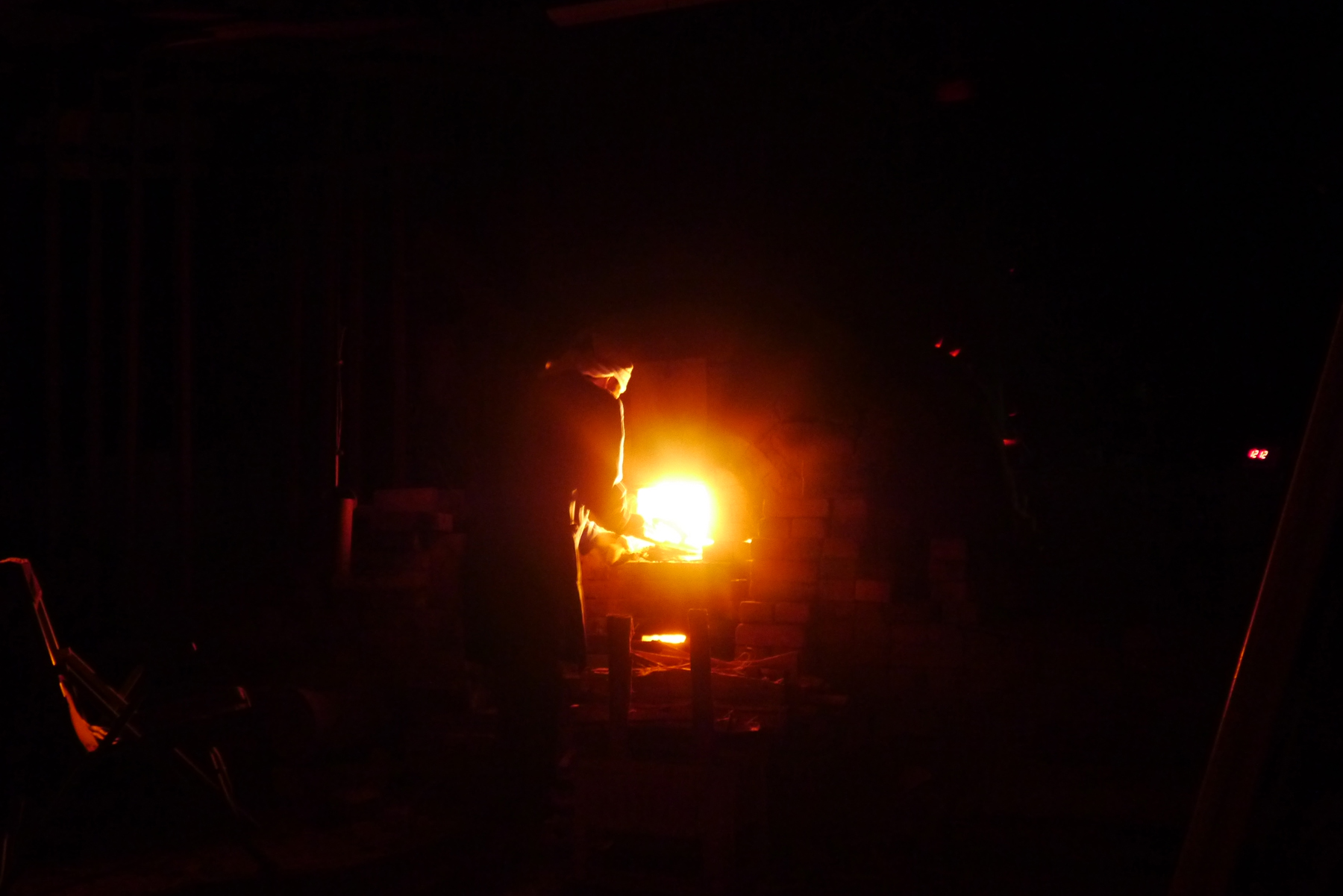

At 3 PM, the fire in the Anagama kiln, which had reached over 1230 degrees, was finally extinguished.
There was a sense of loneliness similar to what one feels after a festival. Friends who had gathered to fire the kiln began to head home one by one. I also expressed my gratitude and left the kiln with a smoldering sense of elation in my heart.
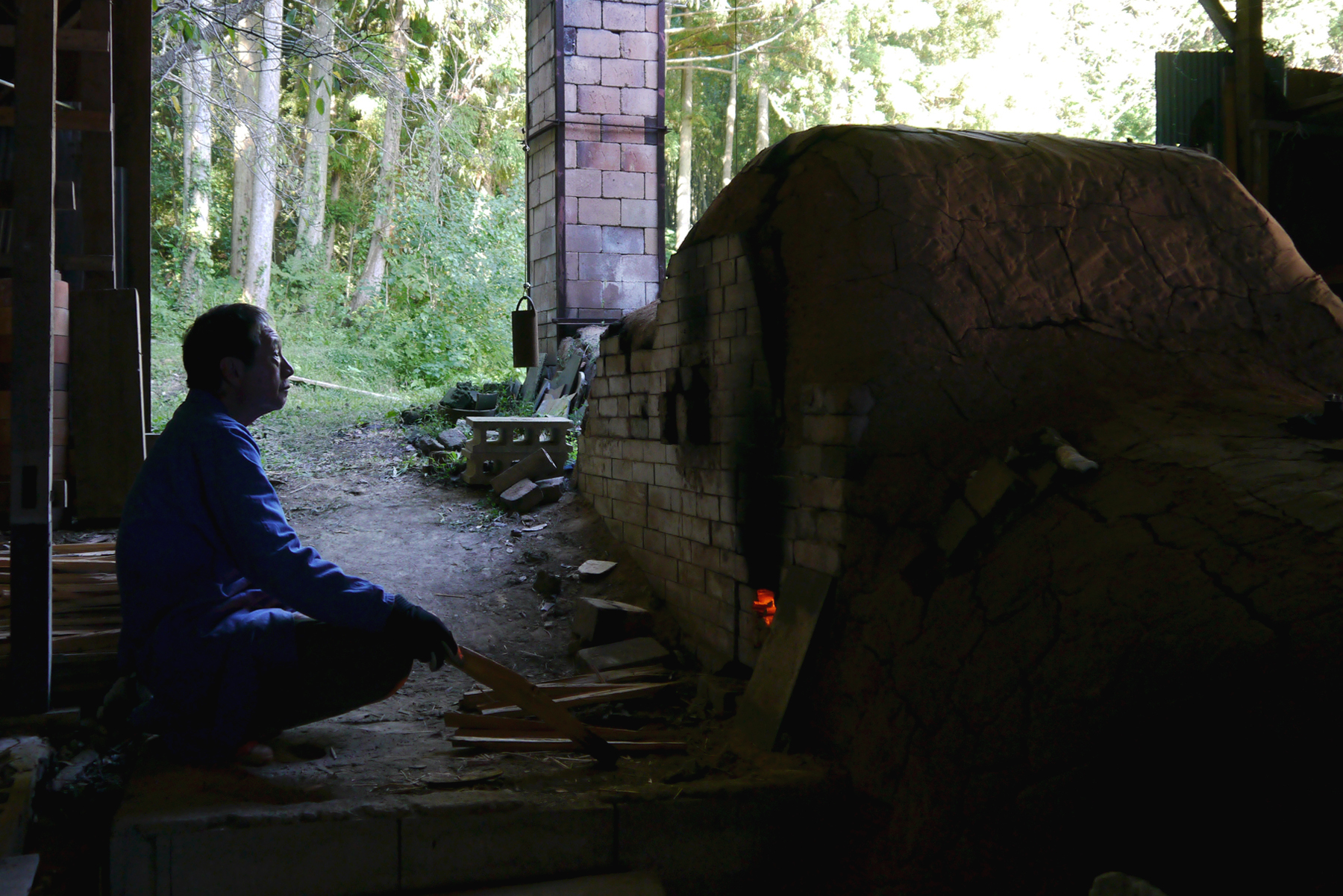
On the way back home by bullet train, I recalled a story from Iwata-san’s childhood. Iwata-san’s father, who taught aesthetics at university, often took the young Iwata-san to kiln sites such as Onta ware in the neighborhood. “My father would not go to a place where the works were beautifully lined up but would visit potter’s wheel studios. He noticed the muddy tools that were actually being used and asked, ‘Could you share this?’ I think that kind of curiosity is at the root of who I am.”
Tools that are simply worn out and messy, unrelated to intention or artifice, carry beauty and strength within them. I sense something similar quietly resides in Iwata-san’s works too.
Images by Aya Nihei. Select images courtesy of Michiko Iwata.

